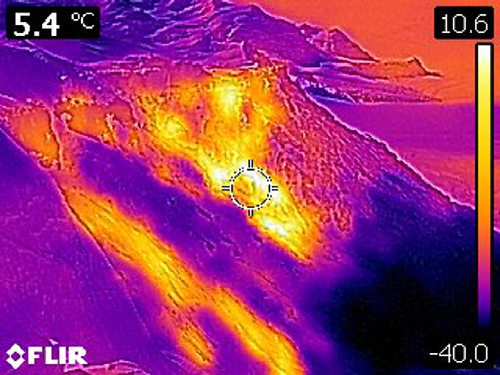Mount Melbourne and Mount Rittmann

Gambino S., P. Armienti, A. Cannata, P. Del Carlo, G. Giudice, G. Giuffrida, M. Liuzzo and M. Pompilio (2021).
Geological Society, London, Memoirs, 55, https://doi.org/10.1144/M55-2018-43
Abstract
Mount Melbourne and Mount Rittmann are quiescent, although potentially explosive, alkaline volcanoes located 100 km apart in Northern Victoria Land quite close to three stations (Mario Zucchelli Station, Gondwana and Jang Bogo). The earliest investigations on Mount Melbourne started at the end of the 1960s; Mount Rittmann was discovered during the 1988–89 Italian campaign and knowledge of it is more limited due to the extensive ice cover. The first geophysical observations at Mount Melbourne were set up in 1988 by the Italian National Antarctic Research Programme (PNRA), which has recently funded new volcanological, geochemical and geophysical investigations on both volcanoes. Mount Melbourne and Mount Rittmann are active, and are characterized by fumaroles that are fed by volcanic fluid; their seismicity shows typical volcano signals, such as long-period events and tremor. Slow deformative phases have been recognized in the Mount Melbourne summit area. Future implementation of monitoring systems would help to improve our knowledge and enable near-real-time data to be acquired in order to track the evolution of these volcanoes. This would prove extremely useful in volcanic risk mitigation, considering that both Mount Melbourne and Mount Rittmann are potentially capable of producing major explosive activity with a possible risk to large and distant communities.


Devi effettuare l'accesso per postare un commento.